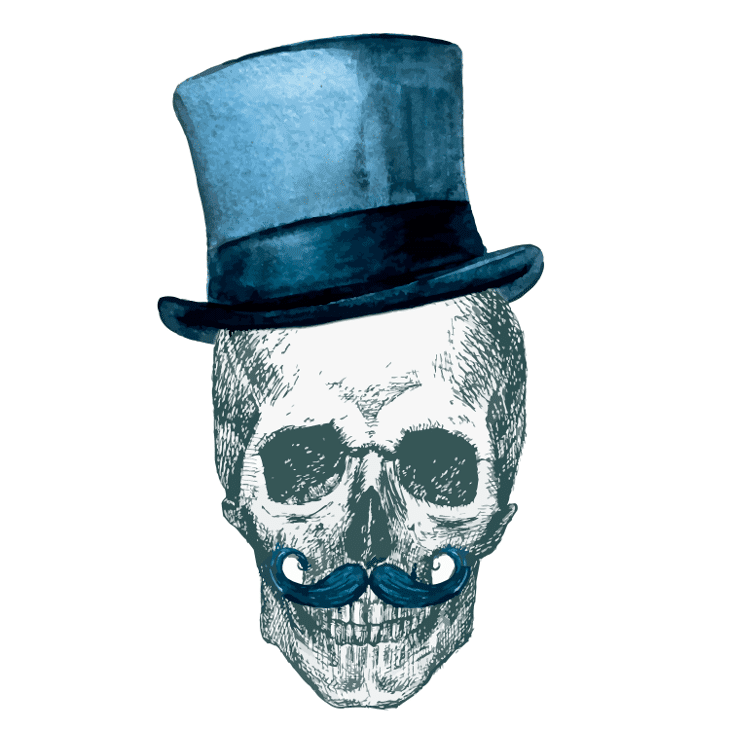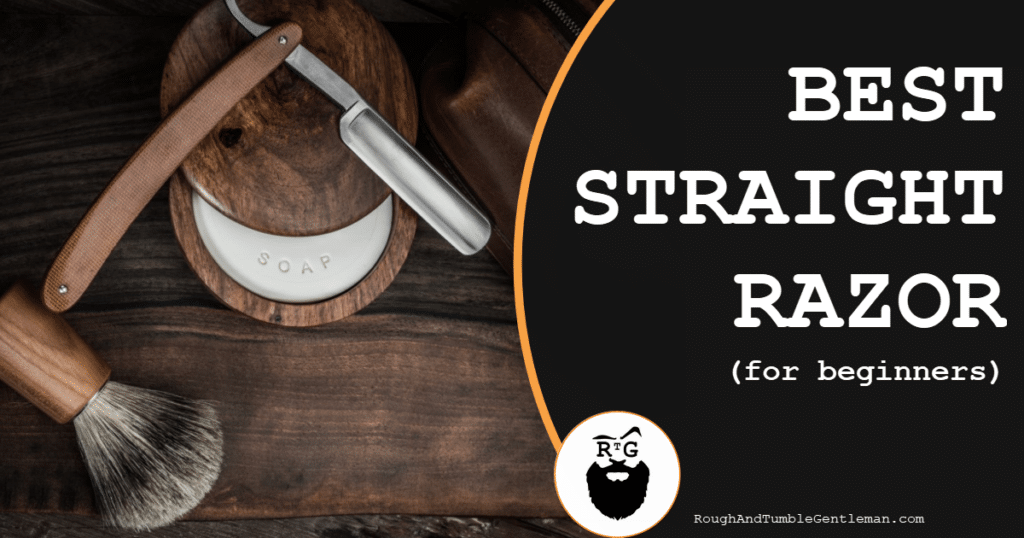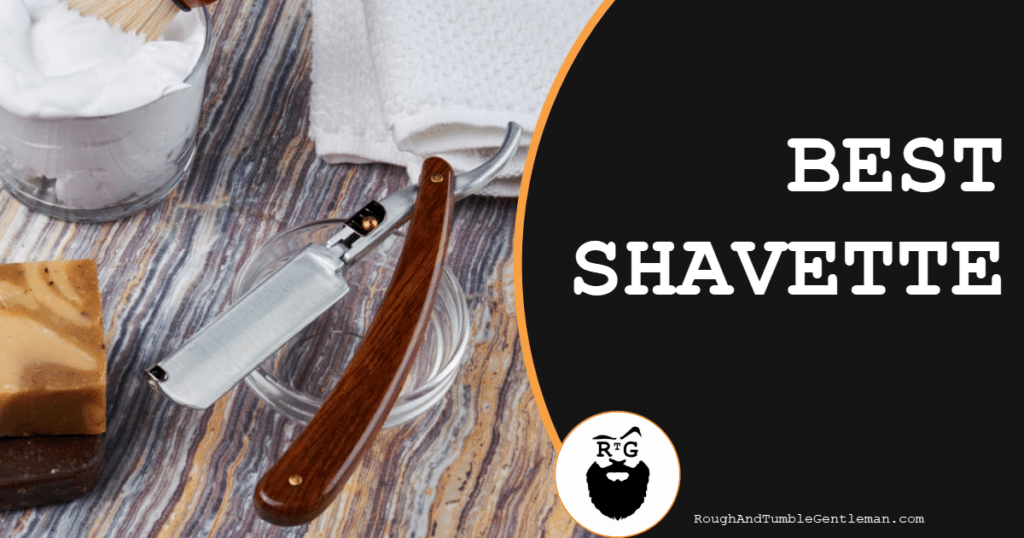You may be thinking to yourself, “Listen, I love shaving. It’s a masculine ritual that I’ve shared with all the men in my lineage going back generations, and it’s an opportunity for me to center myself, feel my place in the history of shaving, and prepare for the day ahead. It’s fantastic.”
We love that you think that. We think it too.
But you might also think:
“It’s just basic grooming, though. How interesting could it be? It’s just scraping metal across your face. What’s fascinating about that?”
That’s where you’d be wrong! The history of men shaving is pretty fascinating, and as with all things that dudes do, some dudes do it weird.
With that in mind, here are a few of the more interesting facts about the history of shaving:
Men Having Been Shaving for a Long, Long Time
You and your Ice Age Uncles have something in common. According to our friends at Gizmodo.com, men have been shaving ever since the Ice Age, when doing so was necessary to prevent frozen beards from causing facial frostbite (just for reference, the term “Ice Age” started 2.4 million years ago, and ended about 11,500 years ago). Flint knives made convenient razors even though they dulled quickly, and many cavemen used clam shells to pluck hair and shark teeth or obsidian shards to pare it back. Things eventually got classy, though, and our other friends at Almanac.com state that copper razors arrived in India and Egypt around 3,000 BCE, and that bronze ones showed up in Scandinavia around 1,500 BCE.
Things got really luxurious, though, when depilatory creams where invented/created/made in ancient Egypt, and in terms of shaving comfort, that is a quantum leap forward. Made from starch, quicklime, and arsenic, these creams allowed Egyptians to remove every trace of stubble from their heads and faces when they rubbed them into the skin with pumice stones. Because Egyptians didn’t really have readily-available soap or medicine, so hairlessness was important—it would keep desert bugs and diseases from settling on their scalps, and it also kept their skin cool. Gizmodo.com (hi, guys!) also points out that ancient Egyptians compensated for the loss of hair with wigs and false beards. People who couldn’t afford to shave, such as slaves and criminals, were viewed as low-status.
Gear took another leap forward in Rome, with the invention of the novacila, which was a sharpened iron block with holes for gripping. Barbers in Rome gently dragged these devices over customers’ necks for a fine shave, and then rubbed away the leftover stubble with pumice stones and worked pleasant-smelling oils into the skin. That would seem torturous today, but it was the height of luxury back then.
After shaving tools became more widespread, people’s preferences for beards have usually tracked the styles of elites, such as prominent artists, aristocrats, and royalty. For example, when Julius Caesar plucked off his beard around 50 BCE, Roman men by and large did the same. Henry VII didn’t have a beard—and so the members of his court followed suit—while Henry VIII did have a beard, and suddenly beards were en vogue again.
But shaving trends haven’t only been tied to what the elites were doing: in many cases, shaving styles were related to military strategy. According to MentalFloss.com, Alexander the Great commanded his soldiers to shave so enemies couldn’t seize them by the hair during battle, and his mandate sparked a fondness for shaving throughout Greece, and about a thousand years ago, samurai who followed the Bushido code shaved their head for military excursions (among other things).
A Rash of Rashes
For thousands of years, amid much grumbling, people made do with simple straight razors. They were lumpy, and jagged, and often made from lousy steel, and they hurt like a son of a gun. At best, they often left unsightly bumps or rashes, and at worst, they were dangerous, and we cause severe facial cuts and wounds. But they got the job done, and there was nothing else available, so that’s what men used. The next quantum leap forward in shaving technology was basically a quality improvement: steel-edged straight razors. Razors had the same basic design, but they were more effective and less dangerous to use. These showed up in Sheffield, England, in the late 17th century, and trickled out into Europe, where they were considered to be prized possessions. Some historians point to these razors as the first to be family heirlooms—tools that fathers would pass on their sons, who would pass them onto their sons, and so on. They’re still popular today (and if you’re nervous about starting off on one, there are a number of beginner-friendly models you can start with).
The real leap forward, though, didn’t occur until a French cutler (a “cutler” is a guy who makes and sells cutlery) named Jean-Jaques Perret wrote a treatise in 1762 titled “The Art of Learning to Shave Oneself.” In it, he put forward the idea of a completely re-designed straight razor. He was inspired by a carpenter’s plane, and his new shaving razor feature fastening a guard over the razor so people couldn’t slice themselves accidentally. Smart guy! Perret sold his razor guard without patenting it (not so smart), but the men’s shaving had forever changed: the first safety razor had thus been born.
Shortly after Perret’s invention, refinements began to appear. In 1847, William Henson filed a patent for a razor with a wedge-shaped blade and comb tooth guard (the guard allowed users to put more pressure on the razor without breaking their skin), and in 1880, the Kampfe brothers added a removable handle and wire guard and designed the head of the razor to catch lather (this was a problem, though, because you had to remove the razor to sharpen it, and that was inconvenient).
It’s kind of fascinating, if you think about it: razors had been around for thousands of years, and until 1762 when a French dude who made cutlery basically revamped them into their modern form. Just goes to show you—maybe someday you’ll do something that changes the history of a product forever. Who knows?

Jump Forward to Modern Times…
So that French cutler basically created the modern version of the safety razor. The modern disposable, however, came when an American figured out a great way to make a ton of money of shaving. That man had one of the coolest names imaginable: King Camp Gillette.
King Camp was an American businessman, a he realized that a good way to get rich was to invent something people needed to buy over and over and over. That’s pretty clever. That something, he decided, would be a disposable razor blade, one that didn’t need sharpening because buyers would throw it away after limited use. He had limited success at first, and according to an article in the BBC, Gillette sold 168 disposable blades the first year and thousands the next. Good growth, but not great—and he realized that he needed to streamline his business model if he was going to strike it rich.
That’s where MIT professor William Nickerson came in. Nickerson helped Gillette stamp the blades out of high-carbon steel in large amounts, rapidly expanding Gillette’s sales capacity. By 1906, just three years after Gillette and Nickerson started selling razors together, the pair sold 300,000 razors. During World War I, the U.S. Army made a contract with Gillette to supply all American soldiers with safety razors, which solidified the Gillette name for good.
By the way, with all the nicks and cuts involved in shaving, that name—Nickerson—that’s a great name for a guy who gets involved in the shaving game, isn’t it? He was destined to change shaving forever.
Want to Become Rich? Take a Product and Make It Electric
Jacob Schick—another name you probably recognize—was an American inventor, and had an idea while hunting in Alaska for gold. The severe cold in the area made shaving insufferable; why couldn’t electricity simplify the process? According to Wired.com, while recovering from a broken ankle, Schick designed a razor powered by an oscillating induction motor. Though manufacturers turned down his idea, he patented it and sold the razors in 1929. Few people bought one, but that didn’t deter him. He was convinced shaving was so healthful it could extend people’s lifespans to 120 if done well (and apparently, this was a very common thing in the early 20th Century—people really wanted to figure out a way to live longer).
Returning to the drawing board, Schick transferred the motor from the razor’s rotating shaft to a spot behind the razor head. Although very expensive for the time at $25 each, the razor sold quickly, generating millions in profit by the middle of the 1930s. Think about that figure—if you have millions now, in the 21st Century, you’re doing pretty good. If you had millions in the 1930s, after the Depression—man, you were doing just fine.
What’s remarkable about Schick’s design, though, is that it remains pretty much unchanged. Electric razors are more ergonomic than in the old days, but they still have an oscillating cutting surface, and that’s saying something. When you create something that never needs updating, you’ve really invented something incredible.
The Mid-20th Century Arms Race in Shaving
By the late 1940s, visiting the barber for a shave ceased dramatically because so many men had razors of their own, be they steel Gillette safety razors or Schick’s electric alternative. Razor design still had a long way to go, however, and during the middle of the 20th century, an “arms race” in minor improvements took place between all the major razor sellers. It was a sort of “golden age” of shaving advancements, and every year, razor/electric razor manufacturers would market new developments. At the same time, shaving cream and other side products advanced. Rise, the first pressurized shaving cream, came out in 1949 and quickly dominated the market (and then later, in the 1970s, shaving gel was invented, to cool shaven skin and reduce irritations).
The 60s: Hippies, Free Love, and Disposables
In the 1960s, every razor company except The Gillette Company made stainless steel blades. Since these blades didn’t rust, they stayed valuable long after their initial use, making them highly popular. Gillette’s initial lack of a stainless steel competitor product caused its profits to fall in 1963 and 1964, but the company rebounded with a higher-quality blade than anything else around.
The real “revolution in shaving” that came during the 60s is one we still have around today: the truly disposable razor. Bic introduced the first totally disposable razor, where, instead of sharpening or replacing the blade when it dulled, the user could just toss the whole thing in the trash and pull out another. That would have been totally unthinkable twenty or thirty years earlier, and as far as a “leaps forward” go, it’s probably on par with Jean-Jaques Perret’s invention of the safety guard. It’s not, in our opinion, a truly good thing—all those disposables end up in landfills, and they don’t decompose, so they’ll be there when our children’s children’s children’s robots are alive—but in terms of advances in shaving, it’s up there.
The 70s: Disco Balls, Disco Blades
In 1971, Gillette introduced the Trac II twin-blade razor. Featuring two blades instead of one, this razor cut a closer shave while requiring less pressure. The Trac II was also a cartridge razor—that is, the handle was permanent, but new blades had to be affixed to it whenever it dulled. Over the years, cartridge razors have acquired new features, such as wire guards, lubrication stripes, and oscillating handles, and the number of blades a cartridge razor can support has increased steadily. Gillette’s Mach 3 razor released in 1998 had three angled blades plus a pivot to make sliding them over the contours of the face easier. In addition, the Mach 3 had a more efficient design for cleaning up. The more blades to a razor, the closer the shave (or so the marketing says—we don’t think that’s the case; we think all those extra blades are a sure-fire way to get razor burn, but that’s a topic for another post).
Company relations heated up in the early 2000s when a competitor to Gillette, Schick-Wilkinson Sword, released the Quattro, a razor with four blades. After accusing Schick-Wilkinson Sword of stealing the Quattro’s design from the Mach 3, Gillette took the company to court. However, Gillette ultimately failed to prevent sales of the Quattro.
Before we continue, let’s all stop and take a moment and recognize what a silly name “The Quattro” is. Because, honestly… The Quattro. With two “t”s. There was an old Saturday Night Live sketch where Will Ferrell is in a commercial advertising the newest razor: a 14-blade monster that’s a foot-and-a-half long, that almost ends his life. Pretty funny.
Alright. Moving on.
Here We Are!
These days, men have countless choices in the shaving aisle: electric razors, disposable razors, cartridge razors, injection razors, single-blade razors, multi-blade razors, and so on, and it’s hard to say what will be invented next. There’s a LOT of money to be made in the shaving market—think about half the population of planet earth, shaving their faces every single day, and you get an idea of the business involved—so it’s a good bet that more developments on the way.
Before we go, though, we’d be remiss if we didn’t mention: inventions are incredible, especially all the engineering that goes into an electric razor that can “read” the curves on your face and adjust the razor accordingly—but there’s something truly special, and truly worthwhile, about a single blade and a dollop of shaving cream. Old school shaving done simply. That’s what we’re about.
OK! That’s it for us—hopefully you’ve found these facts interested. Have fun, and happy shaving!
Michael Morris is the head writer here at Rough and Tumble Gentleman. He's got a ducktail beard and loves Brazilian jiu-jitsu. He's married to the woman of his dreams and lives in Brooklyn, NY.




